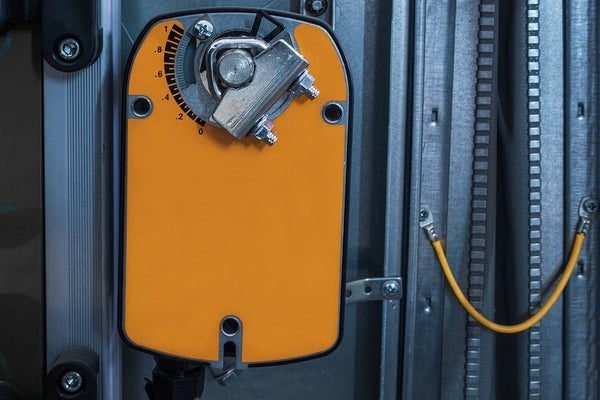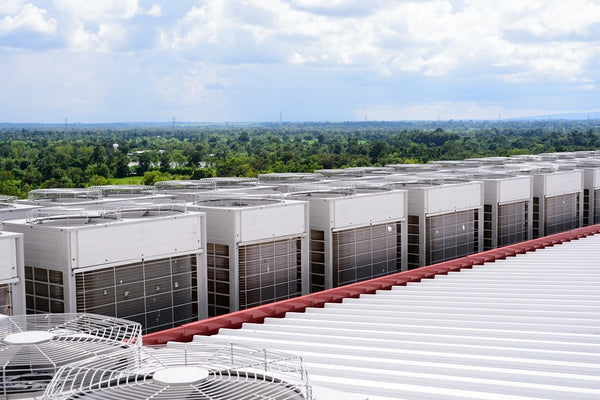
A current transformer, or CT, is a metering system that primarily functions to convert one current that is carried by a CT meter socket into a secondary current that is usually of smaller value, though it can be larger as well. This function exists for a few purposes, including protection and measurement.
CT cabinets, or current transformer cabinets, are basically enclosures, and their primary role is to protect operators from potential electric shocks. They are used in both indoor and outdoor applications, as well as for both residential and commercial applications. Basically, CT cabinets and sockets are crucial components of any and all electrical metering systems.
From wiring to enclosures, we got it all! Shop now at Blackhawk Supply store!
ELECTRICAL SUPPLIES FOR SALEWhat Are the Main Parts of the Electrical CT Enclosure Box?
The main parts of the electrical CT enclosure box are the cover, metal box, and screws. The cover is the top piece that opens and screws onto the metal box. The metal box is the main part of the enclosure and contains the CTs. The screws hold the cover and the metal box together. Depending on the application, some CT cabinet models can also include a hinged door, mounting holes, factory-installed wiring buss, and look-through glass.
CT Cabinets ClassificationS by National Electrical Manufacturers Association (NEMA)
All CT cabinets must meet the standards of the National Electrical Manufacturers Association (NEMA) and/or the Underwriters Laboratories (UL). NEMA and UL classify the varying types of cabinets available.
NEMA ratings are used to specify where and in what types of environments electrical enclosures can be used. For example, they might be classified according to their ability to withstand rain, snow, sleet, and even windblown dust. Among the most popular types of current transformer cabinets are a UL Type 1 and a NEMA 3 enclosure. Below we've listed some of the other types of CT cabinets rated by NEMA.
-
NEMA Type 1
-
NEMA Type 2
-
NEMA Type 3
-
NEMA Type 3R
-
NEMA Type 4
-
NEMA Type 4x
Current Transformer Cabinets can be also classified based on their structural design and functional features:
-
Bar-type CT Style Cabinets. These cabinets are designed to house bar-type current transformers which are primarily used for large current applications. They are robust and typically used in industrial settings where high current levels are involved. The cabinets help in protecting the CTs from external elements and ensure safety.
-
Window-type CT Style with Bus Included. This type of cabinet contains window-type current transformers, which have an opening through which a primary conductor (bus) passes. The bus is included in the cabinet, making it a complete package for easy installation. They are suitable for applications where space is a constraint as they combine two components into one.
-
CT Cabinet with PT (Potential Transformer) Cab. In this arrangement, the CT cabinet also includes a section for housing a potential transformer (PT). This is convenient for measuring both current and voltage levels in an electrical system. It’s widely used in utility and substation applications where both current and voltage monitoring are critical.
-
Transocket CT Cabinet with CT Rated Socket Installed. This cabinet type combines a current transformer with a specially rated meter socket. It's designed to facilitate the connection of metering equipment directly to the current transformer. This is often used in commercial settings where metering accuracy and ease of installation are crucial.
-
CT Cabinet with PT Rack Options. Similar to the CT cabinet with PT cab, this type also accommodates potential transformers but with more customizable rack options. The racks can be adjusted or customized according to the requirements, allowing for more flexibility in installation. It’s ideal for applications where customization and adaptation to various configurations are necessary.
Additionally, CT cabinets are not just classified by the environment they can be used in but also by their design. A few common ones are:
-
Freestanding/Pedestal Mount CT cabinets.
-
Pad-mounted CT cabinets.
-
Wall-mounted CT cabinets.
-
Double-door model CT cabinets.

When Would a Current Transformers Metering Socket be Needed?
Knowing when a current transformer metering socket is needed will help ensure worker safety and regulatory compliance.
A CT metering socket usually becomes necessary when a certain amperage or voltage is reached. According to the EUSERC (Electric Utility Service Equipment Requirements Committee), on the west coast, if an application is above 200 amps, then a CT will be required. In other places, the application needs to be greater than 400 amps to require a CT. For either, the voltage is at 480.
The primary reason for this requirement is safety. Any worker or operator who is responsible for servicing and replacing meters is at risk of serious injury. Also, it's important to note that the primary applications for an electric meter socket are commercial and industrial rather than residential, and requirements should be checked before installation. These requirements include the correct meter socket, internal wiring configurations, colors, meter form, etc.
As you know, a CT meter cabinet is usually used with a CT meter socket. Though usually mounted separately, in some instances, the socket is mounted directly on the CT cabinet itself. In some cases, and in certain areas like the Southwest, a transocket, which houses both the meter socket and CT, is sometimes used.
What Is the Main Difference Between CT and PT Electrical Metering?
The main difference between CT and PT Electrical Metering is that, while a CT meter measures the current through the load, a PT meter measures the potential difference (voltage) across the load. This is because a current transformer (CT) uses a magnetic field to create a current in its secondary winding proportional to the primary current, while a potential transformer (PT) uses a voltage to create a current in its secondary winding proportional to the primary voltage. In shorter terms, CT meters are used to measure current, while PT meters are used to measure voltage.
Additional Features of CT Metering Sockets
CT metering sockets can come with an array of added features that serve their own purposes. For example, one of the most popular electric meter socket types is a meter socket with a disconnect. This disconnect is a switch that can isolate all of the wirings in a commercial property or residence from the power source (commonly, this source is the utility power source).
In general, bypass options are varied; there's auto or plunger bypass, which allows the CT to be automatically shunted when the meter is pulled out of the socket.
A few other features can include a provision for a VT, voltage transformer, pack or PTs, and potential transformers. Potential and voltage transformers serve to decrease the voltage that runs through a meter socket to ensure safety for operators.
Another example is a Square D meter socket, which comes with a variety of helpful features, including the option of being ringless.
Blackhawk Supply CT Cabinet Selection
In summation, every piece of equipment that makes up an electric metering system is essential to ensure it runs smoothly and, more importantly, safely. Current transformers, CT cabinets, and CT metering sockets go hand in hand in providing a safe working environment for operators and workers.
If you're looking for high-quality equipment and components for your electric metering system, including transformers, NEMA-approved cabinets and enclosures, wire, relays, and more, reach out to us at Blackhawk Supply!





